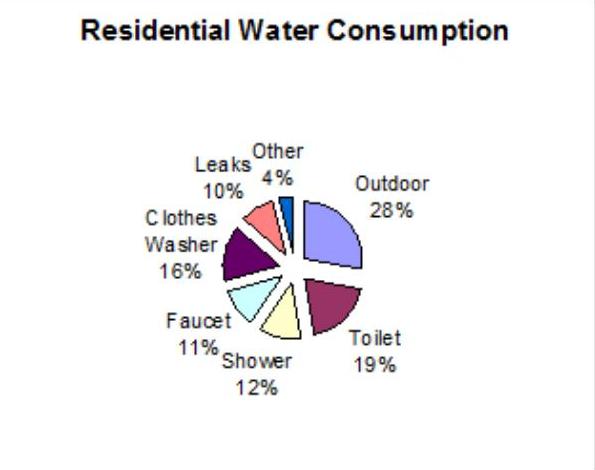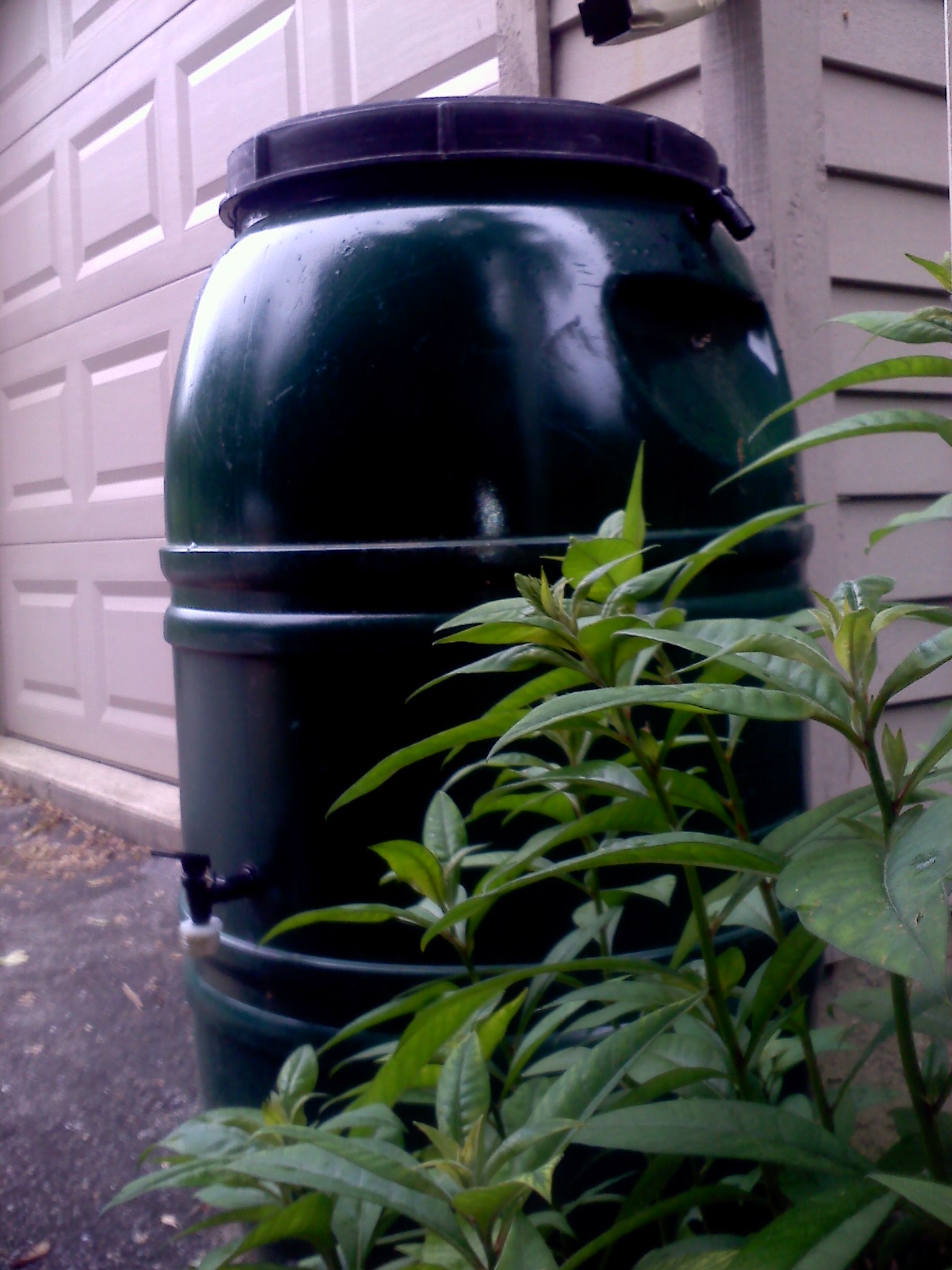Drinkable or potable water is a scarce resource
Drinkable or potable water is a scarce resource that is not easily available to many people around the world. Delivery and treatment is expensive and the amount of electricity used to treat water for reuse and for disposal is huge. The scarcity of water is not unique to the developing world, in the US there are a number of cities that are or will be in the very near future facing shortages of drinking water. This is nonsensical because we have the means and the knowledge at hand to change the way water is managed in our community and household infrastructures and we have the ability to change our usage habits.
The EPA estimates that every day 89% of the fresh, drinkable water that we Americans consume is for uses other than drinking; 28% of that water gets dumped into the garden or on to the lawn to keep it fresh and green. What makes that almost criminal is the fact that every second someone in the world dies from a water related disease or from thirst while in America we use 84 gallons a day outside! What can we do to lower our water consumption? Conserve, reuse and capture.
Conserve Water
In earlier posts we have discussed many ways to reduce consumption without changing our behavior. These included installing Water Sense certified aerators, showerheads and toilets and replacing appliances with Water Sense certified models. Conservation saves water, reduces energy consumption in the delivery and treatment of water, reduces our utility bills for water and sewer, reduces water pollution at the stream and river level and helps maintain ground water levels.
Reuse Water
We have also discussed ways to reuse water generated in your house or office via a greywater system. This may currently be problematic to many municipal Health Departments – especially at the residential level but it is a conservation means that will become more commonplace as water shortages become more prevalent.
Capture Rainwater and use it as the source for all non-potable water
A very viable, health code ready, way to avoid using potable water for some or all of your non-potable needs is to capture rainwater and use it as a primary water source.
Installing rain barrels at your downspouts is a great way to get started with rainwater capture. There are many different types of barrels available in the marketplace – some are listed on our resource sheet – when selecting the best one for your needs make sure of the following:
– Get the biggest one available – 50 gallons is a great size
– make sure it has a filter screen to keep out debris
– make sure it has an overflow outlet
– and make sure it has a sturdy spigot that will accept a hose connection
When installing the rain barrels make sure the tops and the spigot are easily accessible and that the barrels are raised above garden level. This allows you to fill a watering can from the spigot or by dunking it into the top or to use a hose to gravity feed water to the garden.
The rain barrel shown is in my garden. It holds 55 gallons of water and is fed by a very small side roof. It fit in a Prius on the way home from the store, was light and easy to maneuver and has been a workhorse for the garden regularly emptying and filling with fresh clean rainwater.
Remember, the rainwater you capture in the rain barrels is non-potable so do not drink it. But do use it to: Water your garden, lawn and houseplants; Use it to wash the car or rinse off your patio; Use it to rinse off your tools; Use it in your birdbaths; Use it everywhere outside without wasting precious drinking water.
One thing that may surprise you is how quickly the rain barrels fill up. Another surprise may be how quickly all that water is used up in the garden. It made me look at my roof in a whole new light – not just as an architectural detail that provides shelter but as a water resource generator.
Next time we will talk about using rainwater catchment for all of your non-potable water needs.


